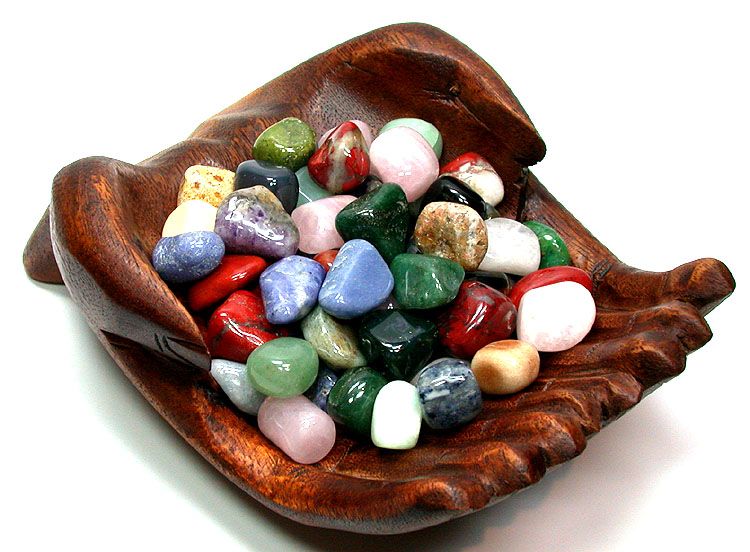Vitamin K Deficiency Symptoms – 5 Signs of Low Vitamin K Levels
- Details
- Written by AndEl

Mike Barrett
Known primarily for helping blood to clot and the promotion of strong bones, vitamin K is a fat soluble vitamin that is often ignored — at least compared to some other essential vitamins and minerals. But like all other vitamins, vitamin K is essential for optimal health for numerous reasons. So why is the vitamin so important, and what are some vitamin K deficiency symptoms?
Why You Should Consume more Foods Rich in Vitamin K
As mentioned, the most well known benefit of vitamin K revolves around its role in healthy blood clotting. In the case of a skin wound, for example, blood clotting (and vitamin K) helps the wound to close and prevents excessive bleeding. Additionally, vitamin K helps keep the body’s blood clotting ability at a perfect level. This is useful even if we are not wounded, so that our cardiovascular system doesn’t block a functioning blood vessel by mistake.
But that is not all vitamin K has to offer.
Like calcium, vitamin K has been established as a bone-enhancing nutrient. Multiple studies have found that those ingesting large amounts of vitamin K are at a decreased risk of bone fractures, while individuals deficient in vitamin K are clearly at a greater risk.
There is also evidence that vitamin K helps prevent arterial calcification.
5 Vitamin K Deficiency Symptoms
Vitamin K deficiency is quite rare for two different reasons. First, the vitamin is absolutely abundant in leafy green vegetables and some green spices. Secondly, bacteria in your intestine actually make vitamin K on their own. That being said, it’s important to steer clear of antibiotics whenever possible. If you know anything about antibiotics, you know that these medicines destroy all bacteria in your gut (good and bad). In addition to leading to other issues like antibiotic resistance, a sluggish mental state, obesity, and much more, the use of antibiotics also puts you at risk of being deficient in vitamin K (due to bacteria destruction).
So while it’s rare to be vitamin-K deficient, it is still possible. Here are 5 vitamin k deficiency symptoms:
- Issues related to problematic blood clotting or bleeding: bleeding within the digestive tract, gum bleeding, heavy menstrual bleeding, or hemorrhaging.
- Easily bruise or bleed.
- Cartilage calcification.
- Uncontrollable bleeding at surgical or puncture sites.
- Brain bleeding in newborns.
Caution: Since newborns don’t have bacteria in the intestine to produce vitamin K, countries like the U.S., Great Britain, and Canada inject newborn babies with vitamin K to prevent bleeding. Unfortunately, this controversial practice may not be a viable solution, and is deemed completely unnecessary by many experts. While the touted benefits of this administered vitamin K dose are understood, though not fully accepted, the immediate infliction of pain after birth can cause psycho-emotional trauma and physiologic instability.
16 Vitamin K-Rich Foods
- Kale – 547 micrograms per 1 cup, raw (684% RDA).
- Spinach – 889 micrograms per 1 cup, cooked (1111% RDA).
- Broccoli – 110 micrograms per 1/2 cup, cooked (138% RDA).
- Dried Basil and Dried Sage- 34.3 micrograms per tablespoon (43% RDA).
- Dried Thyme – 42.9 micrograms per tablespoon (54% RDA).
- Brussel Sprouts – 109 micrograms per 1/2 cup, cooked (137% RDA).
- Asparagas – 45.5 micrograms per 1/2 cup, cooked (57% RDA).
Some other vitamin-K rich foods are okra, beans, cabbage, collard greens, mustard greens, turnip greens, romaine lettuce, spring onions, and prunes. Check out the USDA Nutrient Database to search for specific foods.
Related Read: 16 Magnesium Deficiency Symptoms
How to Safely Supplement Vitamin K
As you probably know, there are a few different types of vitamin K. The 3 main types are:
- Vitamin K1 – Also known as either phylloquinone (a natural form of K1) or phytonadione (a synthetic form of K1).
- Vitamin K2 – Also known as menaquinone.
- Vitamin K3 – A synthetic form of vitamin K that is also known as menadione.
Vitamin K1 is one of two beneficial forms of vitamin K, and can be found in green leafy vegetables like broccoli, kale, and spinach. These vegetables make up about 90% of our dietary intake of vitamin K. The other beneficial form of vitamin K, vitamin K2, can be found in animal sources, bacteria, and fermented products. Lastly, we have the synthetic form of vitamin K which should be avoided, vitamin K3.
Since vitamin K is so abundant in food sources, and bacteria in your intestine produce vitamin K on their own, there is almost no need to supplement this vitamin. Simply continue (or start) eating more leafy green in order to bypass vitamin K deficiency symptoms.
Additional Sources:
University of Maryland Medical Center

Source Here
Liked this article? Dive deeper into personal growth and wellness! Check out CrystalWind.ca for spiritual wisdom or explore AromaWorx.ca for natural well-being tips. Spread the positivity—share this with friends on their happiness journey!
Let’s Chat! Drop Your Thoughts Below! ![]()
Disclaimer Health
All post and information provided within this blog is for educational and informational purposes only, and is not to be construed as medical advice or instruction. No action should be taken solely on the contents of this website. Please consult with your healthcare professional before making any dietary or lifestyle changes or taking supplements that may interfere with medications. Any products or information discussed are not intended to diagnose, prevent, treat or cure any illness, disease or lifestyle. Please consult your physician or a qualified health professional on any matters regarding your health and wellbeing or on any opinions expressed within this website.
Latest Articles

Imagine a world of inspiration and healing, free for all—made possible by YOU!
Donate Now—Ignite the Magic at CrystalWind.ca!

Epilepsy - Finding A Cure
Your donation can make a difference!
Help us find a cure – donate now!
Unlock Your Light: Join Lightworkers Worldwide on CrystalWind.ca!
Follow Us!
Who is Online Now
We have 33847 guests and no members online
Featured This Month
Birth Totem Falcon: Are You a Natural Leader…
Birth Totem Falcon Birth dates: March 21 – April 19 Birth Totem is: Falcon... Read more
Eudialyte: Your Aries Power Stone Revealed!
Eudialyte Birthstone: Aries Planet: Mars Element: Fire Chakra: Heart Eud... Read more
Sun in Aries: Unleash Your Power!
Aries March 21 through April 20 An Overview of Sun Sign Characteristics for A... Read more
Aries Mythology: Discover the Secrets
The Mythology of Aries When we dive into the mythology of Aries, we need to... Read more
The Time of No Time: Beltane!
Around the medicine wheel of life we go, from season to season (solstice to ... Read more
The Crystal Wind Oracle Card Deck
The Crystal Wind Oracle™ The Crystal Wind Oracle Myth & Magic Card D... Read more
Green Aventurine
The Emotional Balancer Stone Green Aventurine is perhaps the best balancing... Read more
Dandelion: The Surprising Power of this Medi…
Reminds you of the abundance life holds. Gender: Masculine Planet: Jupiter E... Read more
Budding Trees Moon: Medicine Wheel Insights!
Red Hawk - Fire Opal - Dandelion - Yellow March 21 – April 19 The Budding Tr... Read more
Bright Beltane Blessings!
The wheel turns to Beltane, also known as Mayday, marking the beginning of S... Read more
































































































































































